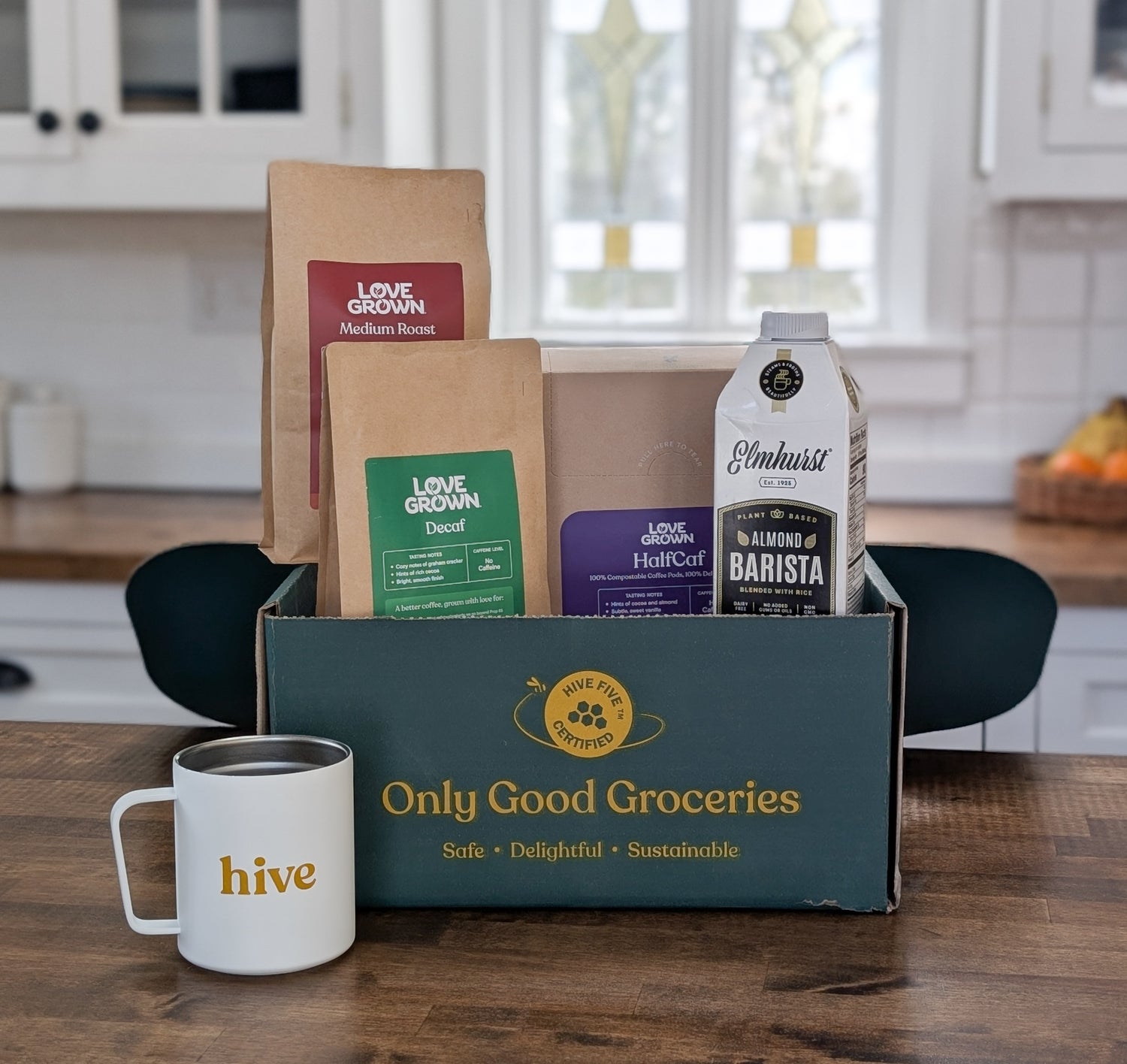Coffee is one of the world’s most recognizable smells and probably the reason a lot of us can make it through the morning. After all, who doesn’t enjoy the warm (or iced) caffeinated embrace of your favorite coffee drink? But, has the questions of what it actually takes to get from bean to beverage may have crossed your mind? Well, we’re here to tell you how that coffee gets into your mug, and how to sip more sustainably with some tips on what to look for when choosing a brand.
What’s in a bean?
First of all it’s actually a seed. Did you know that? Yep, it’s true. Coffee grows on a shrub or small tree in the form of something called a “cherry.” So, those little brown beans we’re all familiar with are actually the pit inside—kind of like an actual cherry. These plants were originally native to the tropical areas in Africa and Southern Asia, but have since been cultivated in other parts of the world, like Latin America and the Middle East. It’s thought that the first coffee beverage (that we would recognize) with roasted beans and hot water, originated in the southern Arabian Peninsula in Yemen. Due to trade routes, its popularity expanded, and the rest is history.
The scoop on coffee
While there are over 120 species of coffee plant, the two most widely consumed are known as Arabica and Robusta. Robusta is higher in caffeine and tends to be used more in large-scale commercial coffee products, and Arabica is generally found in specialty coffee.
Today, Brazil and Vietnam account for the vast majority of coffee production and export, followed by Colombia and Indonesia in third and fourth place, respectively. And because coffee plants thrive in tropical regions, the coffee industry, like many other mass-consumed crops, has been linked with deforestation and other concerns. So, it’s important that we send a market signal up the supply chain by shopping responsibly and demonstrating what we as consumers want to see as acceptable standards for the goods we purchase.
What to be wary of
You can help do your part to improve the coffee industry by being mindful when you shop. Some of the main issues to be aware of are:
- Deforestation: Coffee is a major player in agriculture-driven deforestation. That’s why shade-grown coffee has become the gold standard. Shade-grown means coffee that has been grown among existing trees, leaving the canopy intact. But because of how the supply chain works, it’s nearly impossible to ensure that 100% of any roaster’s beans have been grown like this. A lot of their beans may come from small farmers who sell to cooperatives, where they can mix with other beans and lose their traceability. Fortunately, Arabica beans are much more likely to be shade-grown (and all of Hive’s coffee is Arabica).
- Look for: Arabica coffee, Smithsonian Bird-Friendly, USDA Organic, Rainforest Alliance/UTZ
- Farmer Poverty: The coffee market is highly volatile, so income from coffee farming can vary a lot due to the potentially low transparency in supply chains. As a result, many smallholder farmers live in poverty. And so, coffee farmers are losing young workers and future farmers to urban areas that offer more stable means of earning a living. Choosing fair trade, direct trade, or otherwise living wage certified coffee can help coffee farmers maintain their livelihoods.
- Look for: Fairtrade (there are multiple certifiers here), direct trade (where roasters buy their beans directly from cooperatives in-country at liveable prices), Rainforest Alliance/UTZ certification, SPP (Small Producers Symbol), Fair Labor Verified
Where it all happens
It’s also helpful to know where your beans come from. Different regions have different environmental coffee certification. By double checking where your coffee comes from, you can identify the most prevalent certifications and know what to look out for. Here’s a list of top coffee producing countries and the main certifications they use.
* = RA/Utz top producer
† = SI Bird-Friendly top producer
*Brazil
*Vietnam
*†Colombia
*Indonesia
*†Ethiopia
*†Honduras
*India
*Uganda
*Mexico
*†Guatemala
†Bolivia,
*Costa Rica,
*†Nicaragua,
*†Peru
*Kenya
*Rwanda
*Tanzania
How you can help
Consumers: Do your part to fight climate change. Climate change is impacting coffee growing seasons, weather patterns, and pests and disease (like coffee rust, a fungus that devastates coffee plants).
Use your purchase power to select coffee with better standards, and let companies know that you care.
Coffee companies: Join a collective action network and make a public commitment for transparency improvement through the Sustainable Coffee Challenge.
Hive’s Partners & Standards
At Hive, we only carry blends from our coffee brand partners that use Arabica beans, usually Fair or Direct Trade sourcing. They’ve all committed to highly transparent and responsible supply chains. We’re proud to work with companies who are doing great work to build up the coffee industry as a means to build infrastructure, economic growth, and stability in coffee growing regions.
Sources:
- Climate Change is Threatening Your Morning Cup of Coffee, Time.
- As Climate Changes, Colombia’s Small Coffee Farmers Pay the Price, Yale School of Environment.
- From bean to barista: 4 things to know about coffee and climate, Conservation International
- Extreme Price Volatility Undermines The Coffee Sector, Roast Magazine

